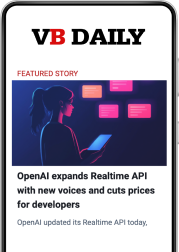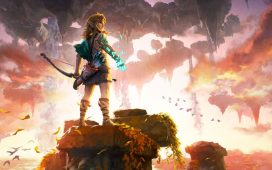I don’t know if there is anyone who has made a bigger bet on blockchain games than Yat Siu, executive chairman of Animoca Brands. His company has made 540 investments into Web3 gaming startups.
And it is no surprise that Siu is bullish on the prospects for blockchain games in 2025. We talked to him for an interview for the outlook for 2025, following up on last year’s conversation about 2024. That optimism starts with Bitcoin’s rise to its $108,000 all-time high and the expected crypto-friendly policies that the Trump administration is likely to implement as Donald Trump takes office in the U.S. on January 20.
But Siu is aware that hardcore gamers in the West are often vehemently opposed to Web3 games because they view them as a bunch of scams or think they add little fun or utility to gaming. Overcoming that skepticism is key to making Web3 games successful among mainstream players, Siu said. The topic is still polarizing, and Siu and I spoke about that.
ChainPlay reported that 93% of announced blockchain game projects are dead. On average, GameFi projects have dropped 95% from their all-time high prices. GameFi projects last only four months on average. And 58% of VCs who invested in GameFi lost between 2.5% and 99%. On average, 316 new projects launch each year, but 262 projects disappear, indicating that a significant number struggle to stay afloat for more than a few months. About 88% of projects saw a token price drop of over 90% from their all-time highs (ATH).
Siu points to the arrival of hardcore games like Off the Grid, a popular Web3 battle royale shooter game played by streamer Ninja, as evidence of the arrival of real blockchain games. He also noted the strength of the TON blockchain on the Telegram messaging service, a Web3-friendly platform with 900 million users. TON has been home to hypercasual minigames that are being enjoyed by millions. He believes that Animoca Brands’ products like The Sandbox, Mocaverse, and others will strengthen this trend.
Without straying to far into overly partisan views, Siu and I had a deep conversation about the opportunities and challenges facing blockchain gaming in 2025.
Here’s an edited transcript of our interview.

GamesBeat: Can you talk about the past year for Animoca and the larger Web3 gaming community?
Yat Siu: It’s funny. 2024 started off strong in Web3 gaming. We had the launch of Pixels. Ronin had a big comeback. Axie Infinity was fueled by that. All the other games that were launching–a whole range of titles came out in Q1. Then there was a general softening of the market. When you look at the overall gaming market, at the start of the year we went all the way up to roughly $30 billion to $33 billion in total market cap. For context, in 2023 it was about half that. It was a doubling of the market value. As we went through the summer, it went down on a macro level. Attention was more focused on other areas, like AI of course, and memecoins, which I’ll get to.
Finally we had a strong revival in Q4. Much of that was focused on what some people in the industry refer to as “dino coins.” One year in the industry is basically 10 years anywhere else. That means projects like Axie Infinity, Sandbox, Decentraland. They’ve all risen in value much more than the games and metaverses that were rising in Q1. Early in the year was more about the new crop. By Q4 it was much more about the old crop, as it were. You had events like Sandbox’s alpha season four, which helped bring attention. But the whole market just went back to the narratives of 2021 and 2022. Who are the original projects that seem undervalued? We should put some attention there. Of course when the market value increases, so does the attention. That whole area just grows.
In terms of notable launches, at least in our portfolio, Off the Grid is the one title that everyone’s focused and waiting on. It did very well in its early access launch. If there’s one thing that there’s hope behind, it’s to say, “This is how we finally bring in the Call of Duty guy.” Bringing the Web2 people to play Web3 It could be Off the Grid.
GamesBeat: That title in particular, it was interesting to see it get popular right out of the gate because it had people like Ninja playing it. But you saw the contrast when those people left. Their deals expired, maybe, and they stopped playing. A lot of the crowd went with them.
Siu: That strategy, using big pro gamers to play games, that’s a strategy that could still work with Off the Grid. Its game quality matches up against the more established, traditional games. A lot of the traditional games still have a strong hold because of the communities attached to them. If you’re a gamer in, say, Fortnite, you’ve built a reputation on Fortnite. Not just a comfort, but a reputation on that network. To transfer and unlock and migrate your reputation from that game to Off the Grid, an entirely new game, means you’re basically doing a restart. There has to be continual, ongoing marketing.
The launch of the token is probably going to be the mechanism to do that. Not only does it provide more capital and incentives, but it also provides the right flywheel for the business to possibly be able to enter into these types of marketing and promotional deals that bring people in. But nobody denies that actually playing the game is something that a traditional gamer finds just as fun, or even more entertaining in some ways, than something like an Axie Infinity, which is a different type of game.

The other big thematic in gaming, on the hypercasual side, was the Telegram audience opening up because of the TON blockchain. While hundreds of millions of users were created, maybe tens of millions of users went into the blockchain because of it. That is to say, it’s still a win for the industry. It’s just maybe not as big as people had hoped for. They thought that, because of the fact that TON was still subject to a lot of sybil attacks, people farming the token and so on–how many of them were real gamers, as opposed to people who were just trying to extract from the network? But what became relevant, and to me even more important for not just Web3 guys, but traditional gaming companies, indie game developers–you can now leverage the Telegram network through the TON blockchain.
In a way, you could say that TON has become the open API gateway for the Telegram base. That’s an interesting model. It extends beyond just, “Here’s a distribution channel,” like what Facebook or Apple might have in terms of discovery and APIs. This is actually something you can build on top of, build primitives and tools that can be used by others in an open and permissionless way, in a manner where Telegram can’t stop you. That’s important.
That’s the problem we had in the traditional gaming industry, where these big platforms would say, “We have an API for you here on Facebook. You can build something!” But when you get too big, like Zynga with FarmVille, they tweak the algorithm – maybe they tell you, maybe not – and suddenly your user base shrinks and your whole business model you put forward is at risk. It’s done arbitrarily. It’s not like they consult with you. They just say, “No, we don’t like that. We have a special announcement. Next week everything is going to change.” That makes it hard.
With something on blockchain, like with TON, there is an absolute certainty, because you can’t change the blockchain–you can’t change the rules around it. Now you can actually invest in it for the long term. That, to me, is an interesting model. It sets the stage for other platforms around the world to open themselves up in this way, as opposed to, “Here’s API access, but we can change it.” Rather, “Here’s a blockchain layer that we offer for you to access our user base and do stuff with it.” Effectively, that’s what TON has done, and Telegram.
GamesBeat: Do you think there are some things that are permanent and some things that could go away?
Siu: The underlying blockchain is permanent, which means the assets become permanent too. This also means that customers start to migrate much more freely. It’s not just being able to tap into a customer. It’s being able to tap into a customer with a provenance based on what they’ve been playing. Hypothetically, if Epic had a blockchain and everyone built on top of Epic because of the Epic blockchain–not likely to happen, but it’s just a thought experiment. Then I would launch my own game on the Epic blockchain. I could say, “If you have a Fortnite skin, or if you’ve played Fortnite for three years,” – because I’d be able to see this – “I have something free for you. Let me give you an air drop.” Or I could give you utility for your Fortnite assets in my new game. You could use these things in a certain manner.

It becomes a much better way of customer acquisition. The way that Epic would monetize isn’t only through the game revenue. Now they could do transaction fees on the blockchain. They’d get fees from that. That’s more sustainable. It no longer becomes as adversarial. The adversarial aspect–I don’t want someone to take my customer, necessarily. But if I have a way in which I can share revenue through the sharing of my customer, you no longer have an issue. That’s what the blockchain strategy does.
There’s a narrative in Web3 recently around app chains. App chains are going to take off. It’s not like an L1 or L2. It’s the idea that I’m opening up my ecosystem entirely through a blockchain layer, but because it’s blockchain, there are rules that I can’t change. There’s a certainty for you to build on top of. If I have rules in the game that are certain, then I can invest and build around that. The problem is that in Web2, the platforms always change their rules. Imagine someone just changing the terms of your rental agreement every three months. You can’t build a business that way.
That’s what’s killing the indies. They have almost no certainty. They’ve come to live in an environment where they almost expect Apple to change the rules. When we started off with Pretty Pet Salon back in the day, we built with a mindset that the rules Apple set were certain. That’s what we thought. We built and we invested on the basis that they wouldn’t change the rules. Then they started to tweak the algorithms around discovery. Apple used to have the App Store rankings. All the players knew how to read the market that way and have discovery. They changed that and kept changing it, until about six years later they just removed it. “We don’t like that. We want to tell you what you should like.”

That really hurt the industry. That was very much correlated to the death of the indie industry at large. Apple played a massive role in that. Whether it was intentional or not I don’t know. But either way, they hurt the market. They hurt an open market. Suddenly it was Apple deciding which apps should be viewed, as opposed to the market deciding through top-grossing and top-ranking. That’s also why the KOL industry grew, I think. The App Store was useless for discovery, so developers moved off to other platforms to try to generate interest. That’s been a challenge.
Blockchain is basically a market. Through the transaction systems, I can see what’s most popular. The indicator is of course financial in nature. “Oh, many people are buying this asset. Maybe it’s valuable.” That’s what top-grossing charts were on the App Store. People used to find apps they wanted to download based on how much people were spending in them. It was a market indicator. “This is making millions of dollars a day. Maybe I’ll enjoy it too.” That’s capitalism, right? That’s the part that’s so mystifying about many of the platforms.
I might venture further to say that the whole political narrative, in the U.S. in particular – these are all U.S. companies – around the direction of more socialist values, you might say, or some people might say more woke mentalities–however you want to frame that thinking, that thinking has affected product development. The removal of App Store rankings, the removal of top-grossing charts, to me that isn’t simply, “Hey, this is better for so-called discovery.” It wasn’t. It did absolutely the opposite. It was more a reflection of a political mindset from the product people behind it. “Money shouldn’t determine the discovery of something. We should get rid of that.”
There’s another camp, which is of course very heavy in blockchain and in the current administration, that says, “Hold on, capitalism is a good thing. Free markets give you what you’re looking for. Both in terms of demand and supply and also in a discovery sense. One example is Polymarket. You might not think that’s gaming in the traditional sense, but Polymarket is perhaps the purest expression of how capitalism predicts outcomes. Capitalism is money. People put in money to say, “This person will win. This prediction will happen.” Prediction markets sway the markets to determine commodity prices or political outcomes by harnessing the wisdom of crowds. We’ve seen that reflected more and more.
GamesBeat: When it comes to those second-half trends, what do you see strengthening or losing steam going forward? There’s that trend of–Telegram was great for a while, and then it slowed down a bit. There are other things taking off now. What’s your view on where those trends are going?
Siu: I think 2025 is going to be a massive year for wWeb3 gaming. Bigger than this year, which has seen quite a strong recovery. But the other trend is that TON is going to grow, because they’re the biggest discovery engine in Web3. Also, if you’re not in Web3, if you want to grow your users, the cheapest way to do that is through Telegram. If you leverage the TON blockchain, you’ll grow faster as a result of that.
It’s a very simple, practical economic exercise. To me it’s no different than–if a special API opened up from Apple or Facebook to help you get users, how many game companies around the world would say, “No, I don’t think I’ll tap into that”? I don’t care if blockchain is behind it or not. You’re going to do it because you want to grow your users. That’s basically what TON is. Where TON may have short-term lost some of the narrative, I think that has a lot to do with the sybil attacks, which is being solved. It comes down to reputation and identity. If you have 30 million people signing up, but only five million to six million are real users, you have a problem. You’re rewarding the majority of the users for bot farming.
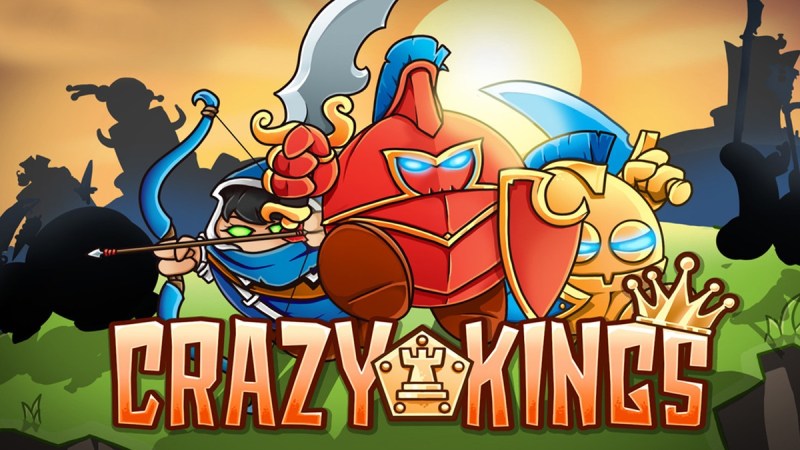
We go through these cycles all the time. If you remember back in the days of early mobile gaming, we had Tapjoy. People were incentivized to game the rankings. That was one mechanism for it. Then you had click fraud, bots clicking on advertising. The famous screens of the Chinese bot farms that had a thousand phones pretending to click on things. Eventually they solved for that. The point is, we’re going through the same struggles that app discovery had back in 2011, 2012, and 2013. That’s what we’re seeing in blockchain now. As that gets solved–that’s what we’re doing with Mocaverse and Moca ID. Not just to prove that you’re human, but prove that you’re a good human. You have a reputation you can build up. Then we can give you more rewards. That’s all happening, and I think that will ultimately solve for that.
Things like Gam3, which now has something like two billion impressions a month, they’re turning themselves into advertising platforms. Again, that cycle is similar. Indie game companies, back in 2012 and 2013, made a lot of money through advertising, because they could. They had mechanisms, whether it was through Tapjoy or Admob, the third-party networks that did that, which were ultimately removed or banned from the platforms, especially Apple. In blockchain that wouldn’t happen. I predict a lot more of these companies coming up, building their traffic, and monetizing it freely, because they don’t have to worry about Apple deciding they don’t like ads, or it looks bad in the UX. That’s the other thing. “You won’t get featured if you show too many ads, because they say it looks bad for the user experience.” People reacted that way all the time.
GamesBeat: For something like Telegram, do you think actual games will take off there, or just very light, casual games? Will you have to point to your games on other platforms?

Siu: Because of its social nature, I’d say that Telegram is in stage one. There’s going to be hypercasual, obviously. But also, if you think about games like where FarmVille was going, it’s entirely possible that these games will become much more sophisticated. Mobile games are no longer super casual. I think you’ll get to the point with Telegram where it will become a major game distribution platform that can rival the app stores, with the type of games that are cross-platform.
The days where you have a single-platform approach – Apple versus Google or PlayStation versus Xbox – I don’t think those days exist anymore. It’s all cross-platform. Similar to how we view the world of chains. We think it’s all cross-chain as well. We don’t think there’s such a thing as one chain that will win over the others. It’s not Immutable versus Ronin. Both of them contribute to the growth of the ecosystem. That’s why we invested in both of them. We feel that’s how the space is going.
The other thing we believe will happen in 2025 is that memecoins will launch games of their own, or gaming companies will start using memecoins in their narratives. It’s customer acquisition. It’s a way to bring in users. If you’re a game company, let’s say an indie game company–maybe you’re not even in blockchain, but you want a new customer base. You should probably build something on PENGU, or maybe build something on DOGE, or CHILLGUY. That’s controversial in a way, of course. The creator of CHILLGUY is not interested in CHILLGUY’s token. The point is, the user base that owns those tokens is an addressable customer base. That wasn’t possible before. You couldn’t do that. Now you can.
It makes sense for application developers and game developers who are not in Web3 to say, “Here are millions of users spending billions of dollars. How can I get them to use my stuff or buy my stuff?” To me, that’s the pathway to memecoins. They’re just different distribution vectors. L1s and L2s are basically discovery channels.
GamesBeat: What else makes this into a banner year? There are some games coming through the development pipeline.
Siu: Outside of Off the Grid, we have about 160 game investments. Many more of them are coming out in 2025. But let me distinguish the gaming market right now, the categories. In Web3, you have the Web3 gamer, a Web3 native person. The intersection between the people who play Web2 games and the Web3 natives is very small, for now. The person who plays Axie Infinity, who plays Pixels, isn’t the typical player of Call of Duty or Fortnite, or even Roblox or Minecraft.
It makes logical sense that a Minecraft player would be playing The Sandbox. That’s happening. But the intersection there, it turns out that it’s a lot of people who don’t play games a lot. They started playing games because of The Sandbox or Axie Infinity, because of the narrative and the incentives. I see that as very similar to how mobile games developed. The first wave of mobile gamers weren’t console gamers. You remember when console gamers were shitting all over mobile games. They all said, “We will never play a mobile game. It’s not a real business. These aren’t real games.” Five years later they were all playing mobile games. All the game developers that were building on console said they would never make a mobile game. They’re all building mobile games today.
Why? It’s because a new audience has come through. Then what’s interesting is that the mobile game users, who expanded the market to the 3 billion gamers we have today–a percentage of those, it could be single digits, said, “What’s the next level of gaming?” That’s why the PlayStation 4 took off in sales while the PlayStation 3 completely collapsed. The PS3 didn’t have new gamers to sell to. The PS4 had new gamers to sell to because of mobile gaming. Mobile gamers who enjoyed games wanted another level of gaming. They wanted to buy a console. That’s happening in Web3.
GamesBeat: I like the Blockchain Gaming Alliance report that said 52.5% of the people working in Web3 games now are from the existing game industry.
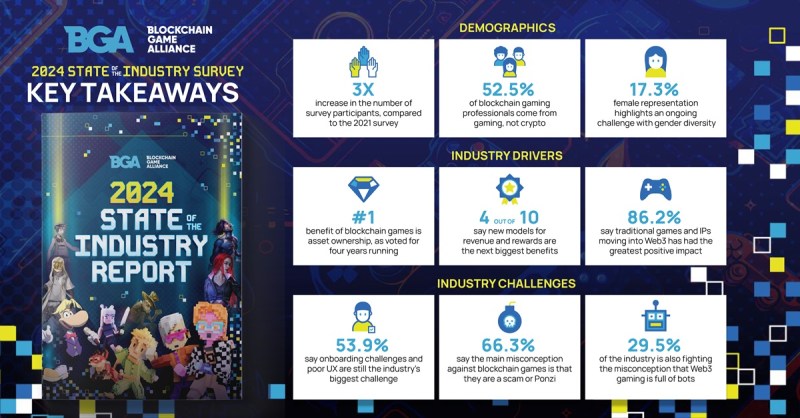
Siu: Right. It’s already happening. It’s absolutely happening. But my point is, Web3 is expanding the gaming pie. If you look at the traditional gaming world today, which includes mobile, what’s the talk? Stagnant. Not growing. It’s sequels. When’s Grand Theft Auto coming out? That audience has been largely tapped out, I would say. It’s not that they don’t spend money, but the growth of the traditional gaming industry is where it was in 2010 and 2011, pre-mobile. Look at the numbers. There’s more than three billion people who play games. About 2.8 billion people do not play games. That audience is growing in developing countries and elsewhere. We’re going from six billion to eight billion people online. There’s a ratio of people playing games and there’s a ratio that aren’t.
The Web3 gamer is coming in through Telegram or blockchain games, whatever. They say, “I like these kinds of games. I’m here for value. I’m here for ownership.” But then they realize that they enjoy this. They’re going to be the drivers that say, “Hey, I’ll buy a console game.” They’re expanding the audience. I feel like that’s how you more rapidly onboard the next billion gamers coming from a different direction in a more passive form of gaming, in a way where people can participate more broadly. That, to me, is developing and expanding the market overall. I think we’ll see a lot more of that.
I see a convergence. The narrative used to be, “All those people playing Web2 games, they’ll move to Web3. That’s the opportunity.” We thought the same. I would say it’s very different now. Our perspective is that it’s much more about convergence. A Web3 user that doesn’t normally play games will play a lot more games because of Web3. They’re coming into the game industry. They may flow into traditional games. Then Web2 gamers, because of games like Off the Grid, are coming into Web3 as a result. It’s more of a convergence of the two than just one wave going into the other.
GamesBeat: As far as the resistance of western gamers to blockchain games, the hardcore people, one thing that’s interesting–there’s a group on, say, Twitter that really hates “woke” games. They don’t like it when there’s a female hero in a game, things like that. But then something like The Last of Us comes out and everyone plays it. There’s a resistance that gets broken down by something of high quality. I wonder when you think that is going to happen with Web3 games. There’s no question that quality is going to be the thing that gets everyone on board, but how is that resistance weakening among those who don’t like Web3 games?
Siu: I’d make a general guess that the people who don’t like Web3 gaming are also typically–I think I said this last year as well. They’re typically people who are anti-capitalist, for the most part. Their association and relationship with money is complicated, tense, unwelcoming, that kind of thing. That’s why I mentioned last year–I think this is so true, over the past year and going forward. The Asian gamer is much more open toward it, because capitalism has been positive. Asian people generally are much more open to talking about money. For better or for worse, they even evaluate relationships based on money. There’s this famous thing in South Korea, where people will just say, “How much money do you make?” In the west that would be a rude question. In South Korea, maybe you just don’t meet someone’s requirements, and it’s fine. It’s a totally different relationship with money.
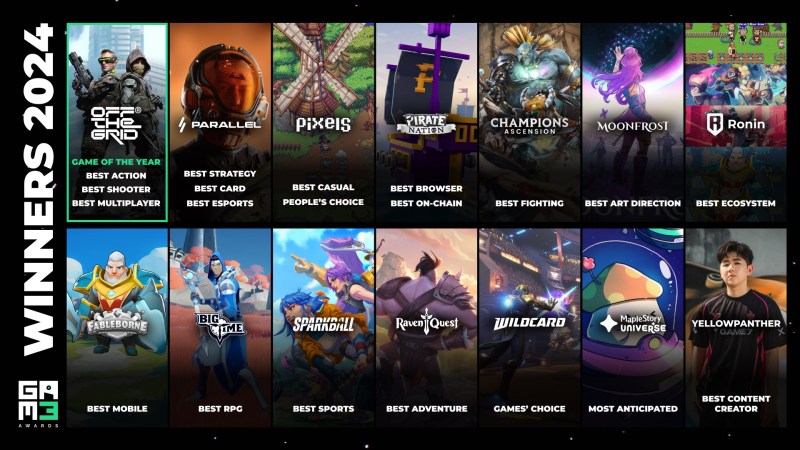
That translates very much into the western narrative of the ones who don’t like that – or the ones who don’t have that, more specifically – where this becomes something negative. That has a lot to do with narratives around–hey, this person has money. Is he deserving of that? Or this narrative around, he’s a billionaire, so he must have done something crooked to get there. It’s a classic European narrative, and it’s started to take over parts of the U.S. That’s very much what’s going on in the elections.
GamesBeat: Can I challenge you on one thing here? When I think of Democrats and Republicans — half the U.S. voting one way and half the country going the other. If half the country had these anti-capitalist attitudes and that carried over into hating Web3 games, the other half should like them, right? I wouldn’t think we would see so much resistance. In the case of blockchain games, it feels like more than half really don’t like them.
Siu: My response to this, it’s a bit like Trump in the first election. People voted for him, but they didn’t say they would vote for him. People who feel like they agree with this, but they feel like it’s something they can’t talk about, because the environment around them is so hostile toward it. The noise factor around anti-Web3 gaming in America is greater than the sum of people who are actually partaking in this. That’s what people said about Polymarket as well. Polymarket actually predicted outcomes more accurately than any pollster. A lot of Americans were participating. Maybe they’re not the ones opening saying “Yay, Trump!” but they showed that in other ways.
My point is, I think a large swath of Americans very much enjoys Web3 games and wants the opportunity for ownership. The Blockchain Gaming Alliance report showed that year after year, in the fourth year going, the number one thing they cared about was ownership of their digital assets. It wasn’t about the money. This comes down to this other fundamental thing, which is that blockchain is about, do I own my assets? Do I own my stuff? That’s also the Bitcoin ethos, sovereign ownership of money. These are the principles. That doesn’t just spill over to people who care about and understand money. That also spills over to a whole set of people who care about the fact that they have the freedom to own things. This is mine. I’ve earned it. Nobody should be able to take that from me.
GamesBeat: If there’s this fear of coming out and saying you like crypto and you like blockchain games, and this was emphasized by a Democratic administration that said crypto is nothing but a bunch of scams that we have to protect people against, but now you have an administration coming in and saying that crypto is okay within rules we’ll have for this, does that give people permission to go ahead and say that they like this? It’s legal and they’re going to proceed.
Siu: Correct. I agree with that. Also what’s going to happen is that the groups will come out and feel that they’re supported. Right now, if the narrative in the community around you is that this is a scam, so what type of person are you–the second point is that other people will feel empowered to come to you. Then you basically create rallies. There’s a lot of ammunition coming from the previous administration for someone to easily bash on you. All of the anti-crypto guys, anti-Web3 gamers would just point to the SEC and other claims. Look, the government doesn’t like this. This happened. That happened. Frankly, our industry didn’t do us any favors with people like Sam Bankman-Fried. That wasn’t helpful. But that’s the main point. They’ll feel empowered to come out.
That’s something that Asia never really had. That’s why we’ve been able to develop, because we haven’t had that stigma. I think of it as very similar, in a much smaller way, to in-app purchases. In-app purchases weren’t really created or innovated in Asia. It’s just that Asian players were fine with it. Pay to win? Okay. Pay some more money to get ahead? Okay. That’s how it started, before it morphed into the current model. Everyone in the west said, “That’s not fair.” That changed a lot. One thing I would also say is that in the western game developer’s perspective, from what I can tell they’re definitely more left-leaning than right-leaning. It starts at the core.
GamesBeat: Where do you think funding is going to go? There’s been a cycle to Web3 funding. We got through a period of–a desert, I guess. Funding dried up. A lot of companies that got initial funding went out to look for a second or third round and couldn’t get it. A lot of those Web3 game companies died. Now it seems like it’s looser again. Bitcoin is at an all-time high. Where is the available money going to go? Will it go back into Web3 gaming startups? Are we going to get more blockchains doing something more innovative? Or does the money at this point go into something else, like doubling down on the most promising projects?
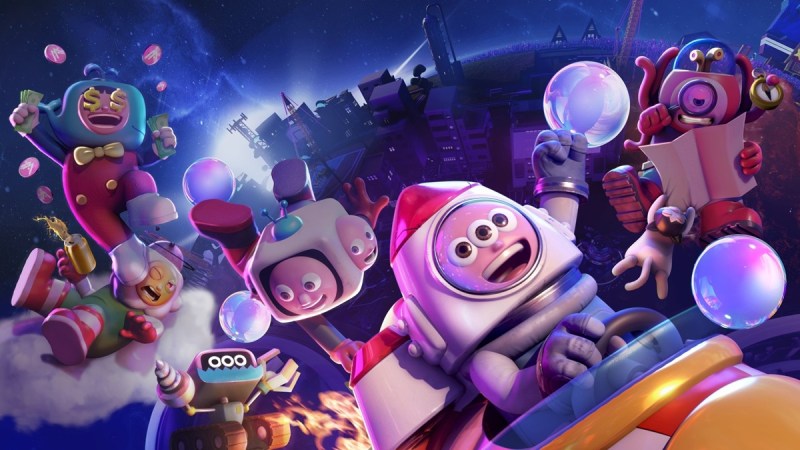
Siu: First, on the funding cycle, there’s the VC side, companies like ourselves in the investment space. We hadn’t stopped investing. Most recently I think Messari came out and said we were the most active investor in Web3. They put out a report. They said we did 107 deals. We actually did more, but that’s fine. It’s nice that they’re counting. The point is, people in the industry continue to invest, because those are some of the best opportunities in the space. When funding has supposedly dried up, that’s how we can sometimes get the best deals. That’s how it started off with Sandbox and Axie Infinity, when no one was touching the sector.
The VC side will open up much more fundamentally. The reason is because the U.S. capital markets will open up. All the U.S. VCs that either wanted to but couldn’t, or maybe didn’t want to enter into crypto yet, under this administration they’ll either have crypto funds or they’ll open up a portion of their funding. Before they said, “You do crypto? I can’t even talk to you. You have tokens? I can’t talk to you.” That will go away. In the U.S. you have leading companies like Paradigm and a16z and so on. They’ll have competition in the U.S. markets, which will bring in more capital, which will bring in more attention and more competition. This is not just for gaming, but Web3 generally. In a rising market every sector will improve, and gaming is no exception. That’s the macro.
On the second level, this is where I think the bigger opportunity exists. Web3 is a new wealth class. It’s not people who have made money before. Some did, but most people in crypto, it’s an entirely new wealth class. The people who made money with Bitcoin, Ethereum, and Solana in the early days are not people who work on Wall Street. Quite the opposite. Then they created their own competitive space. They grew to a certain size. It’s an entirely new wealth class.
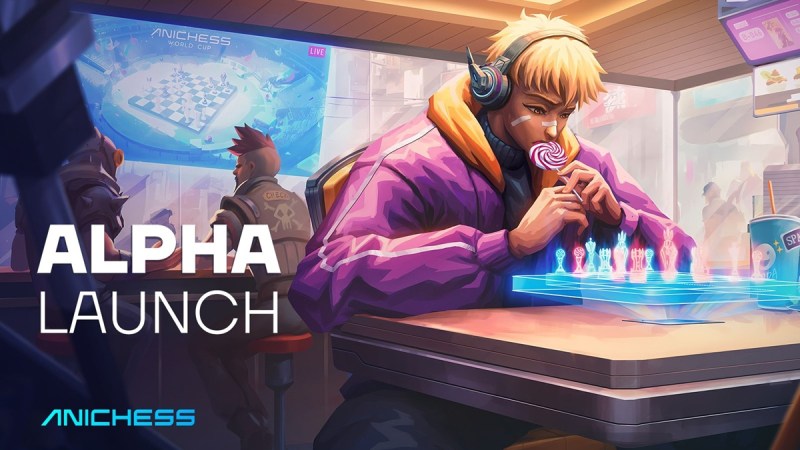
That entirely new wealth class has flavors very similar, in the way the flywheel works, to how Silicon Valley developed. People in Web3, when they make some money, tend to reinvest most of it back into Web3. Think of it as like an angel funding environment. The angel funding environment in Web3 has been growing explosively. A lot of it has gone into memecoins and other things like that, but that capital comes from there. When you see the cycle–when Bitcoin hits $100,000-plus, if you look at the Bitcoin dominance, it always stays around 55-56%. It’s slightly above 50. It’s never 70% or something like that. They take a profit in Bitcoin and then they put it back into altcoins. We see this macro the whole time. Bitcoin goes up, plateaus a bit, and then altcoins are on the rise, like the SAND token.
For that reason, 2025 will be a big year for altcoins, just the macro. It comes not from the institution, but from the retail. “I made money here. Where do I put it?” Launchpads, token projects, these are all ways in which Web3 gaming companies can raise. Of course, you have to be much more mindful. In 2021 a lot of projects went through that same cycle that weren’t real projects. People are getting smarter, but you have to do your research. That’s one side. The second side is about playing inside these games and making value because of higher token prices, participation, and buying assets inside the games. That will increase as well. We see NFT sales becoming much higher. Gaming asset sales are going higher. The revenue inside those games will increase as a result as well. If you have excess purchasing power, you’ll spend. The Pudgy Penguin airdrop aside, before that every NFT project was rising in value. The NFT sales are already at over a $1 billion monthly run rate.
GamesBeat: The whales are back in the games too.
Siu: Well, it’s not just the whales. The people who you might not necessarily classify as whales in the traditional sense have now made money too. They’re coming back to the space and having fun and playing games and so on. The funding cycles are better because the users are making more money. It’s not just funding and VC. It’s consumers. Remember, in Web3 your customer is an owner. Your customer isn’t just a user to extract from. He becomes a part of the ecosystem. Every player has an investor-like relationship. I don’t mean that they have equity, but they have a stake in you. They’re stakeholders. They’re invested in your success, and therefore you’re responsible to them as well.
This, by the way, is very hard for a game studio that isn’t capitalist-minded. Web3 is a capitalist framework. If you’re not thinking like a capitalist, you’re going to have a hard time. A lot of Web2 to Web3 gaming projects that have failed come from the mindset of not thinking about the value in capitalism. Because gaming–you’re building your own economy. A lot of them also think, “I’m a game designer. I know something about the economy.” I’m afraid most of them don’t, in fact. You make good games that have good rules inside the game, that have aspects that are economical, but it has nothing to do with economics. That’s the struggle as well.

You have people in the field that believe they know this, because virtual currency feels like money. It’s not money at all. That’s the other thing. There’s a correlation between–hey, I have an in-game currency, so I’ll just do a token. That’s absolutely not true. It’s much more complex than that. But that’s the first instinct people have.
GamesBeat: Do you think that things will get so good in 2025 that we’ll see things like IPOs for game companies? Can Web3 game companies in particular participate in that?
Siu: I think so. I don’t know whether 2025 will be the year in which a lot of Web3 game companies IPO, but it will be the year in which–2026 is the more realistic time frame. It takes about a year or more to go public. Right now you see a lot of IPO plays beginning. Companies are saying, we buy Bitcoin. MicroStrategy knockoffs. You see versions of that beginning already, all over the world. That opens up this pathway of, “Wait, the public story, the crypto story, that seems to work financially.” You have that activity. I’m expecting SPACs to start doing crypto narratives very soon as well. That’s probably what will happen in 2025, just as a catch-up. 2025 will see public companies, but more in that area because of the readiness around them. Then Web3 gaming studios will go public as well as a result of their financial results and so on. That will happen between 2025 and 2026.
GamesBeat: I saw you did another interview with someone who asked a lot about your stablecoin investments. What are some projects that reflect your beliefs about these wider predictions?
Siu: Outside of massive investing, as we continue to do so, our involvement in things like Pudgy Penguins and Magic Eden and so on–these are just recent examples. For Mocaverse and Moca ID, from a gaming perspective, the way you can think of it is we’re building a decentralized Steam. What’s the most valuable thing in Steam? It’s not the stable of games. It’s the user identity and access to it. With an ID and reputation system, we’re already allowing everyone to tap into that base. That’s your ID, but it’s public. I know what games you like. I know how much money you’ve spent on stuff.
The reason I think about zero knowledge proof is that I can attest to my reputation without revealing to you who I am. I can still use a new wallet, but I can attest it through our ID system. I know that he’s a good gamer and I should work with him. Likewise, you can reduce reputation. Moca ID is important for us. We have more than 540 portfolio companies. More than two-thirds of them have not yet launched a token, which is essentially a way for them to do user acquisition. The struggle is that we don’t want them to basically airdrop 80% of them to bots. That would be terrible.
This is another thing that maybe people in the Web2 gaming industry don’t fully understand. When you tokenize anything, in this case gaming assets, what you’re really doing is opening up your network, your gaming network in this case, to a wider audience outside of gaming as well, to build and compose on top of it. You’re sharing your network. That’s what this is. A lot of people don’t understand that part. Once you open up your network, you create more network effects. Whether this is a TON Telegram example, L1 or L2, or Ronin and Axie Infinity, or even Mocaverse, when the token is out there, you’re bringing attention from people who are not necessarily playing your game, but it gives you noise. It gives you attention. It gives you a memetic quality. People talk about it and know about it. It’s marketing.

We want people to understand that and help them launch that way, but we want to make sure you give the value of that network to actual people who contribute value to the network. A network effect is not valuable when people are only there to extract and leave. Then you just have a wasteland. That happened to a lot of Web3 games. It was a wasteland for that reason, because it wasn’t real people playing. It was just bots extracting value.
That’s where the next cycle will come. Mocaverse plays a big part in that on the identity and reputation side. Then we have our own specific gaming initiatives, like Anichess. We’re working with Chess.com and Magnus Carlsen and those guys to build one of the biggest games in the world in a blockchain type of way, where you can open it up with public tournaments and sharing of revenue and so forth. That’s another area that becomes exciting. With Cosmic Royale and some of our racing games, it’s all part of our thesis around how we think the space will grow. We’re big investors in TON. We were early backers of that ecosystem back in 2023. We feel that can help distribution. We encourage everyone to use that. You can not just grow the ecosystem, but grow your user base. It’s the cheapest way you can do that. We continue to back and invest on that thesis.
We’re going to add hundreds of millions of new users into Web3 in 2025 because of all the games that are launching. I think we’ll see record high on-chain activity. I also think 2025 will be the year we see a shift much more strongly into DeFi activities versus centralized exchanges. That’s important, because that will drive more activity on chain. The more DeFi, the better it is for Web3 gaming. The more centralized, if it’s more about traditional exchanges, that’s not good for Web3 gaming. Web3 gaming primitives are on-chain, not off-chain. As that will rise, as we expect will happen, then Web3 gaming will grow alongside it. I’m super bullish about 2025, if you hadn’t noticed.
READ SOURCE

